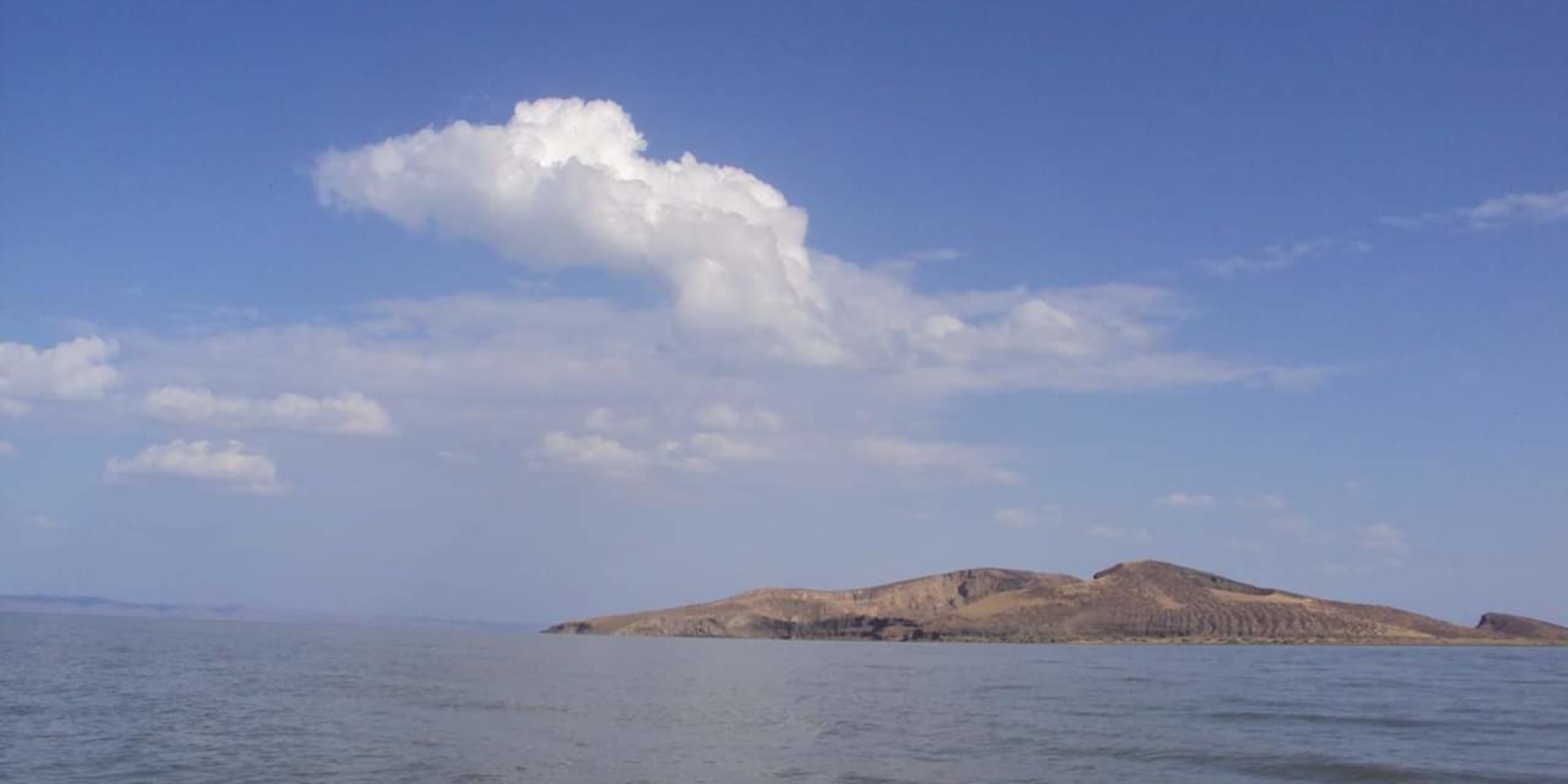
Central Island National Park is just 5 square kilometres in size, but it is so visually and archaeologically unique that it is a must-see on every adventurer’s Kenyan itinerary. Central Island rises starkly above the emerald waters of Lake Turkana, the largest permanent desert lake in the world, and is composed of three hissing and belching active volcanoes and many smaller volcanic cones. Each of the volcanoes houses a crater lake, making Central Island the only place where you have the remarkable opportunity to view lakes within a lake!
Turkana basin has a total surface area is 7 million ha. The lake is the most saline lake in East Africa and the largest desert lake in the world, surrounded by an arid, seemingly extra-terrestrial landscape that is often devoid of life. The long body of Lake Turkana drops down along the Rift Valley from the Ethiopian border, extending 250 kilometres from north to south and 50km at its widest point with a depth of 30 – 80 meters. It is Africa's fourth largest lake, fondly called the Jade Sea because of its breath-taking colour
The area around the property is sparsely populated due to its isolated location, inadequate freshwater and national protection status. It is an important habitat for hippopotamus and the world’s largest colony of crocodiles (and the largest Nile crocodile breeding ground in the world). Physical evidence through scientific studies indicates the area’s continued support for the habitation of flora and fauna of diverse species over millions of years to the present. In addition, volcanic eruptions and extensive lava flow, geological faulting within the Great Rift Valley, and the formation of sedimentary deposits have assured preservation of fossil remains, which are significant in understanding the history of life, especially human evolution.
The adjacent Mount Kulal Biosphere Reserve serves as a watershed for the Lake Turkana Basin and as a wildlife dispersal area. It, thereby, assures the protection of the biological and natural processes making it an important site for avian habitation and migration, particularly water birds.
Lake Turkana is the most saline of Africa’s great lakes and is recognised as a UNESCO World Heritage Site. Central Island is one of three National Parks (the other two are the Sibiloi National Park and Southern Island National Park) situated on Lake Turkana, and together these three parks provide an incredible storehouse of archaeological and paleontological sites, making Lake Turkana and her Islands a treasure-trove of fossils and other deposits required for the study of plant and animal communities. In addition, Central Island provides a major breeding ground for Nile Crocodiles, Tilapia, and many species of water birds.
The three major crater lakes on Central Island are known as Crocodile Lake, Flamingo Lake and Tilapia Lake respectively, and each of these provides a perfect breeding ground for the animal it is named after.
Accommodation along the shores of the lake include Kalokol Campsite, Lobolo Camp and Eliye Springs Resort, among others. There are some basic guest houses in Kalokol town. There is a heap of activities that can be accomplished. These include
Sightseeing.
Boat ride, canoeing and lake exploration.
Birds and reptiles watching.
Nature trail hike.
Fishing.
Evening traditional songs and dances.
Leisure, swimming, white sand beach sun basking.
Turkana cultural festival {only in August}.
Beach and bush catering.
Donkey, camel, and bike tour.
Prehistoric site tour.

